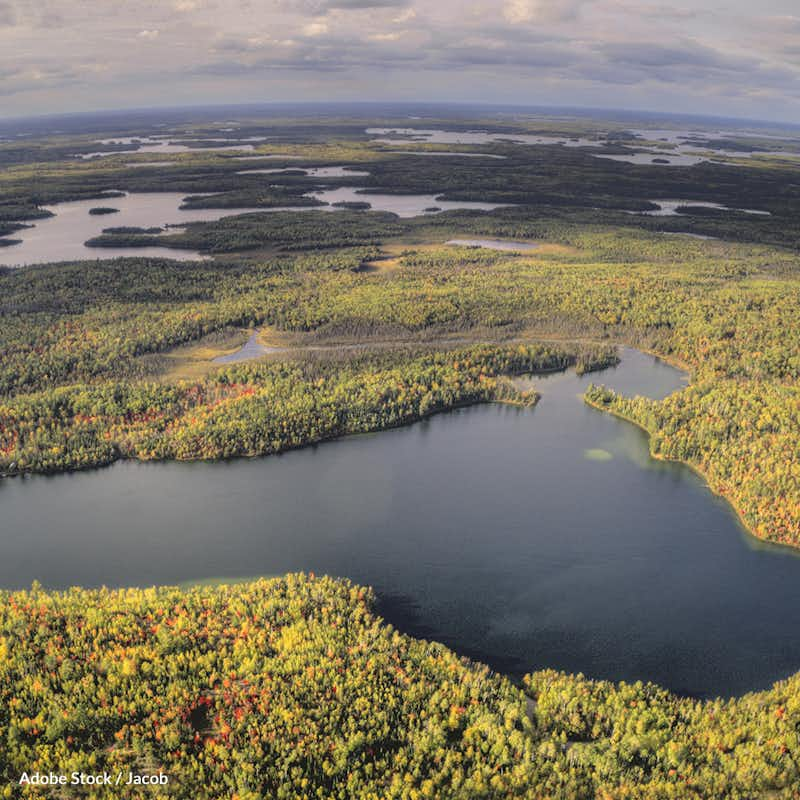Save Minnesota's Boundary Waters From Toxic Pollution
22,962 signatures toward our 50,000 Goal
Sponsor: The Rainforest Site
The Boundary Waters is America's most visited National Wilderness Area and it's being threatened by pollution from mining.

The Boundary Waters within Minnesota's Superior National Forest is America's most visited National Wilderness Area, a 1.1 million acre region, with over 1,000 lakes and 1,200 miles of rivers and streams1.
From this area, countless millions of Americans draw clean, drinkable water. They fish in the freshwater lakes, hunt in the deciduous forests, and enjoy the beauty of the thriving native flora and fauna all throughout the year.
Now, imagine enjoying the same after covering the Boundary Waters with a half-inch oil laced with nickel, copper, and palladium.
Previously terminated in 2016 out of caution for the perceived environmental impact, two federal mining leases for Antofagasta's Twin Metals Minnesota are being quickly--and potentially illegally--pushed through the federal approval process. The company wants to build a sulfide-ore copper mine on the banks of, and under, the South Kawishiwi and Birch Lake2.
Renewing these hardrock mining leases meanwhile cancels a promised assessment of a proposed 20-year ban on copper mining on Superior National Forest lands near the Boundary Waters3.
Questions surround the hurried environmental assessments that were carried out, as well the volumes of scientific research that say this could be a bad idea.
The location of the mines put the St. Louis River, Lake Superior and the Boundary Waters at risk of pollution from heavy metals and other contaminants1. Mining crews are already drilling deep holes into the rock near Tamarack, Minn., looking for signs of copper, nickel, and palladium, minerals which will be sold to manufacturers of stainless steel or electric vehicle batteries4.
More than 99% of the material extracted from these mines would be waste, quickly turning to sulfuric acid, heavy metals and sulfates that can pollute critical waterways. Acid mine drainage from these mines will undoubtedly pollute the Boundary Waters, leaving them damaged for hundreds of generations to come5.
A sulfide mine in the Boundary Waters could also pollute tribal resources retained under the Treaty of 1837 and the Treaty of 1854, as well as communities of the Mille Lacs Band of Ojibwe6.
The Environmental Protection Agency classifies hardrock mining as the top polluting industry in the United States7. The risk it presents to the Boundary Waters is too great to allow such mines to be constructed in Northern Minnesota.
Sign the petition below and tell the Secretary of the Interior to cancel these mining leases, protecting millions of Americans and the water and wilderness of the United States!
- Earthworks (2019), "Save the Boundary Waters."
- The Wilderness Society (15 May 2019), "Trump admin renews mining leases near Boundary Waters."
- Jennifer Bjorhus, Star Tribune (23 October 2019) "What you need to know about Minnesota's PolyMet and Twin Metals mine projects."
- Greg Seitz, St. Croix 360 (3 July 2020), "Mining exploration near headwaters streams causes pollution concerns."
- American Rivers (2019), "Boundary Waters [MN]."
- Water Legacy (2020), "Potential Sulfide Mines."
- U.S. Environmental Protection Agency (September 1997), "EPA's National Hardrock Mining Framework."
The Petition:
To the Secretary of the Interior,
The Boundary Waters within Minnesota's Superior National Forest comprise more that 1,000 lakes and 1,200 miles of rivers and streams. These waters provide millions of Americans with clean, drinkable water and beautiful wilderness to explore for fun and recreation.
This region will be devastated if the two federal mining leases for Antofagasta?s Twin Metals Minnesota are approved, and sulfide mines are constructed on the South Kawishiwi and Birch Lake.
The Environmental Protection Agency classifies hardrock mining as the top polluting industry in the United States. While there may be commercial value in the minerals in Northern Minnesota, more than 99% of the material extracted from these mines would be waste, quickly turning to sulfuric acid.
These heavy metals and sulfates will seep into our waterways. Acid mine drainage from these mines will undoubtedly pollute the Boundary Waters, leaving them damaged for hundreds of generations to come.
The people have spoken. Dozens of peer reviewed studies and a warning from the U.S. Forest Service have provided science-backed reasoning on why hardrock mining should not be allowed in Minnesota's Boundary Waters.
I demand that you stand up for American water, wildlife, and wilderness, and cancel the two federal mining leases for Antofagasta's Twin Metals Minnesota.
Sincerely,